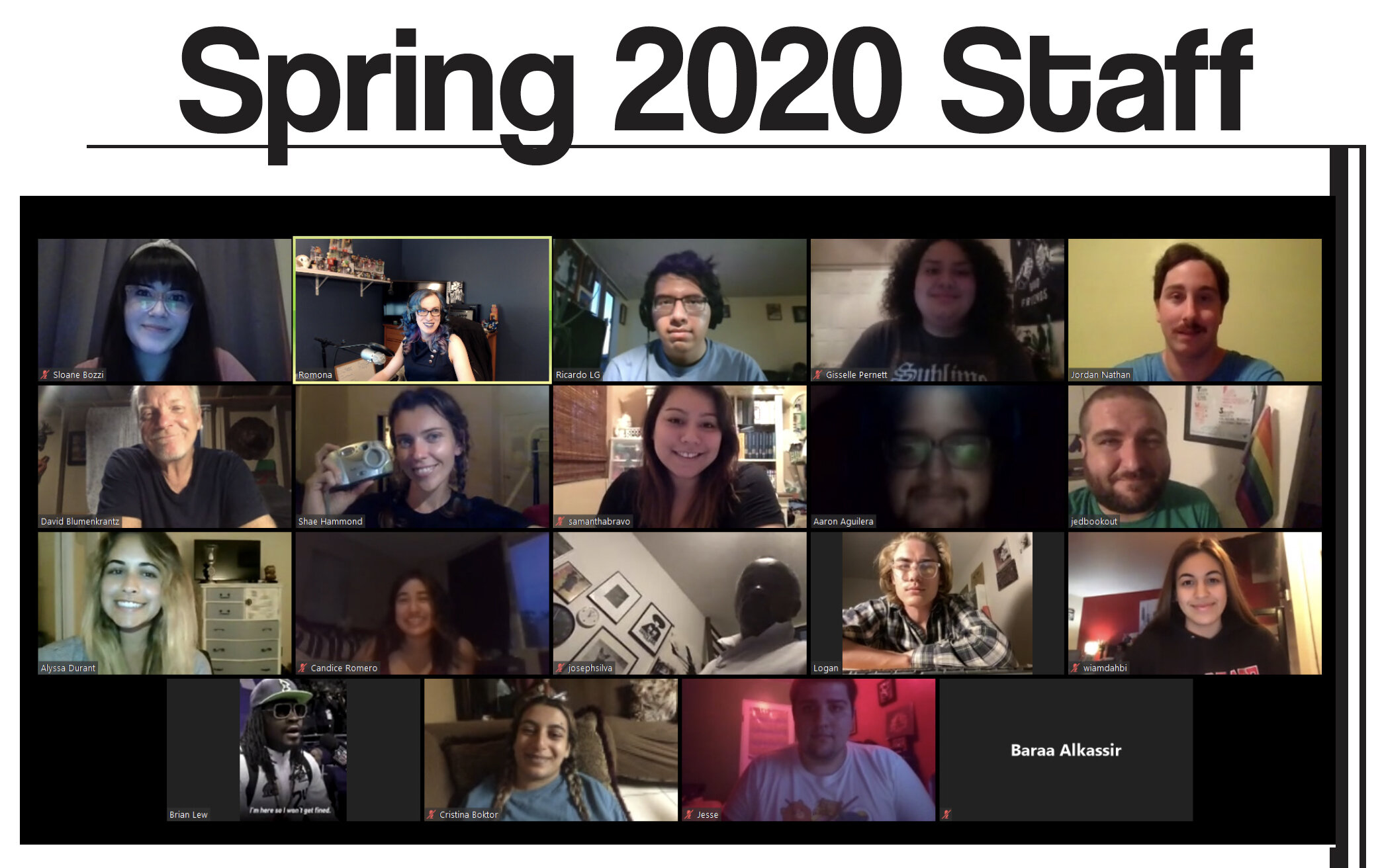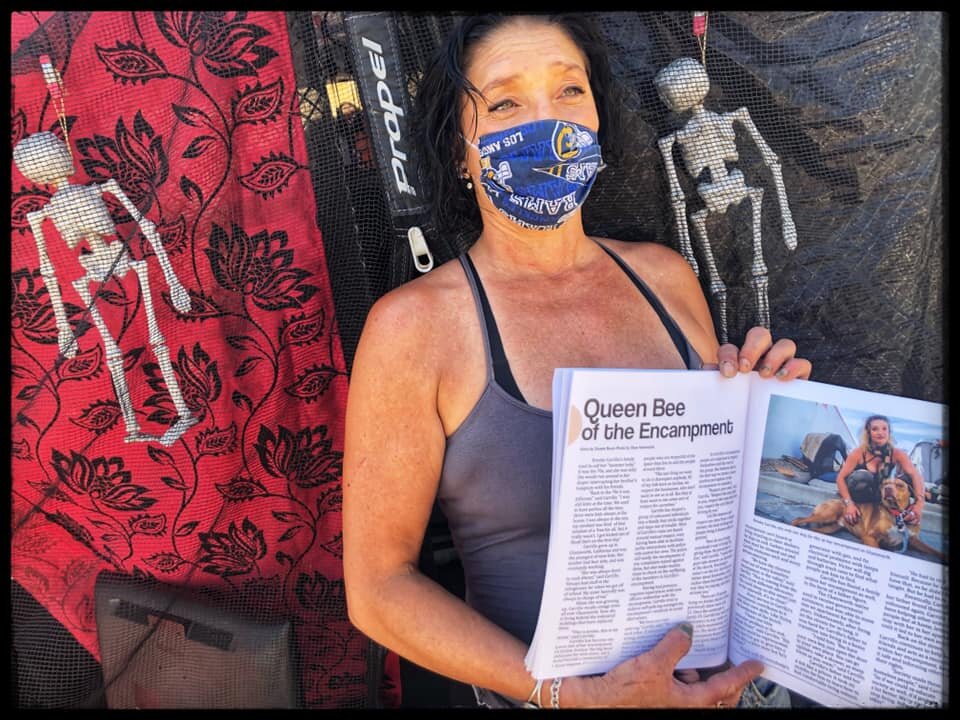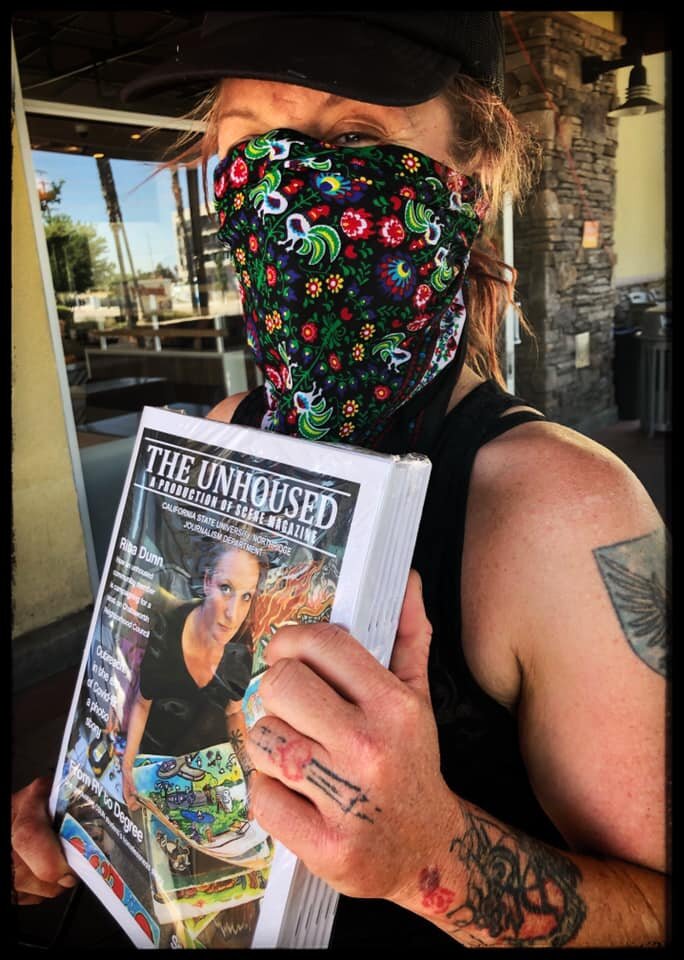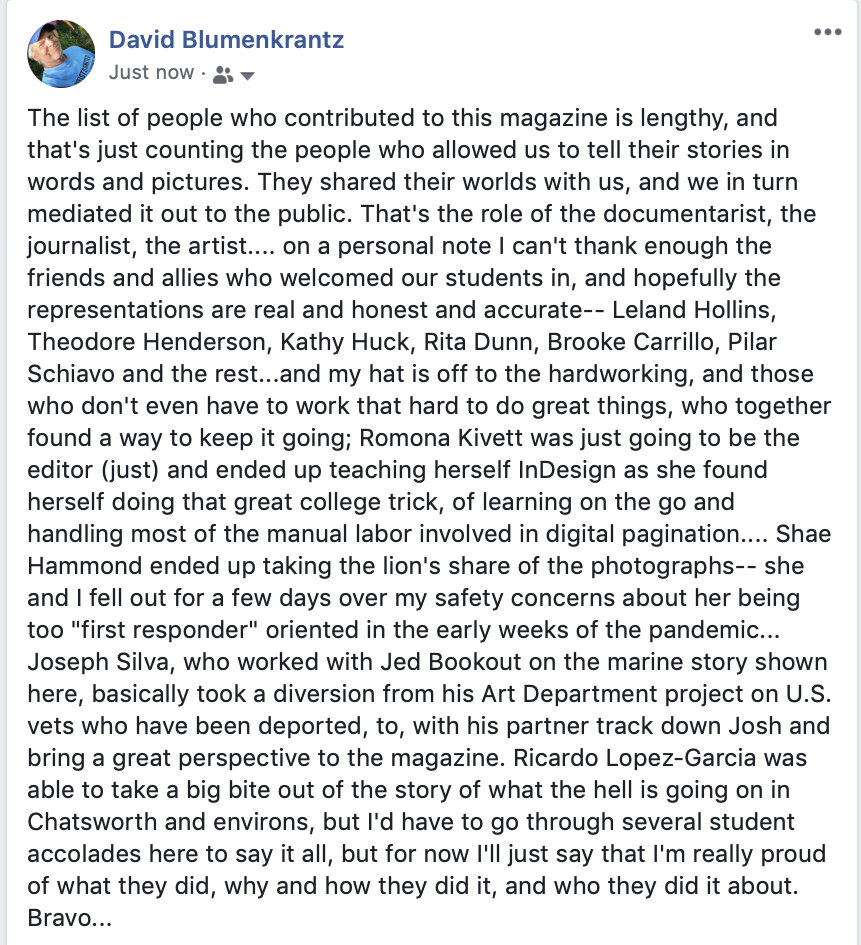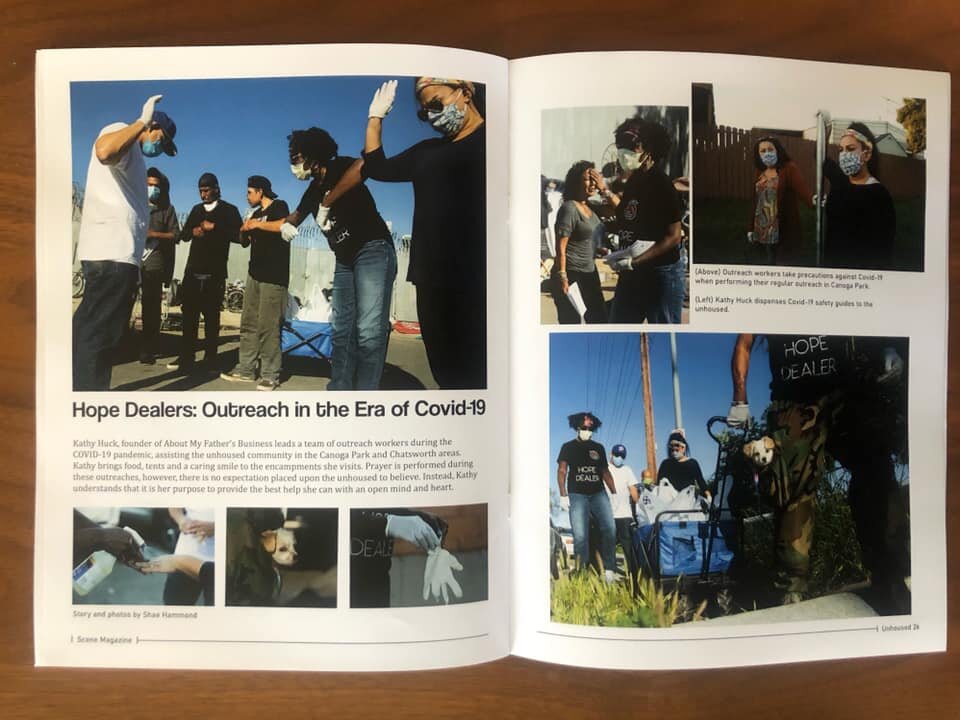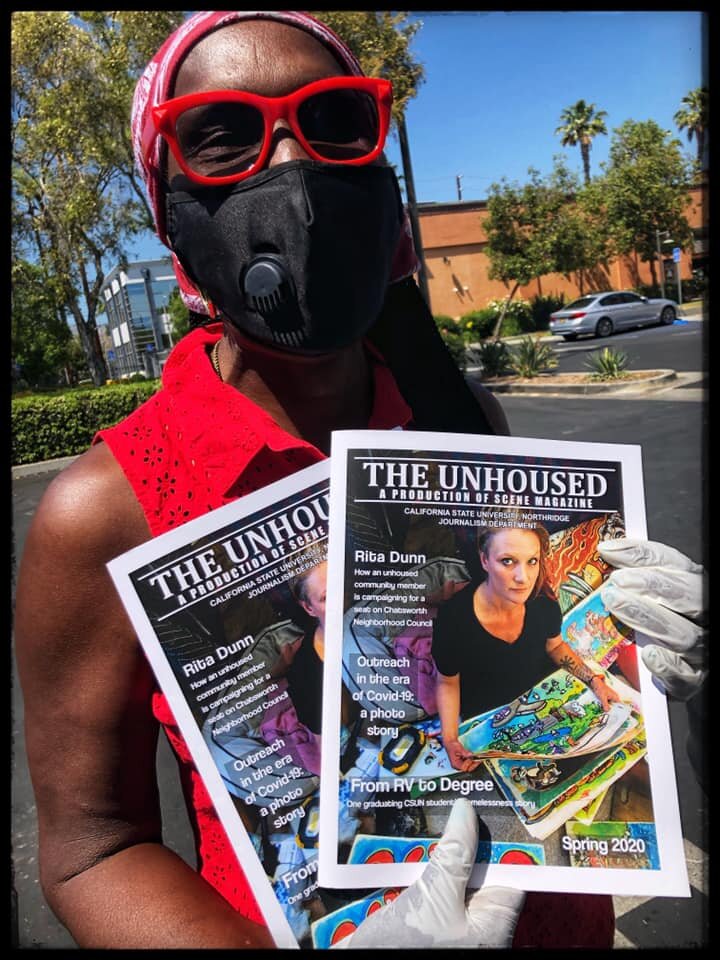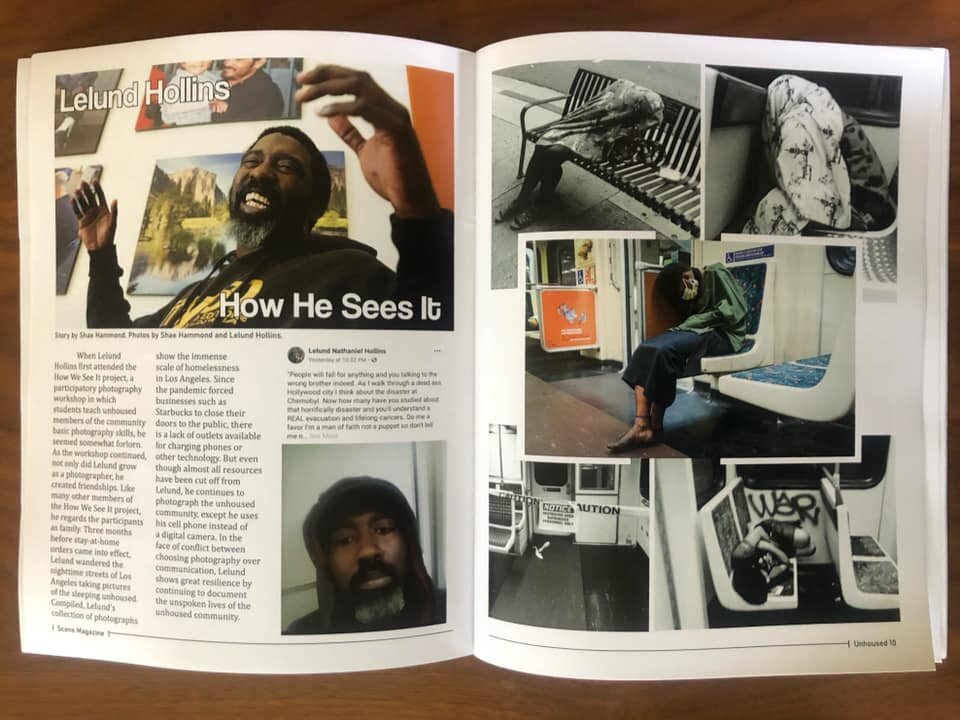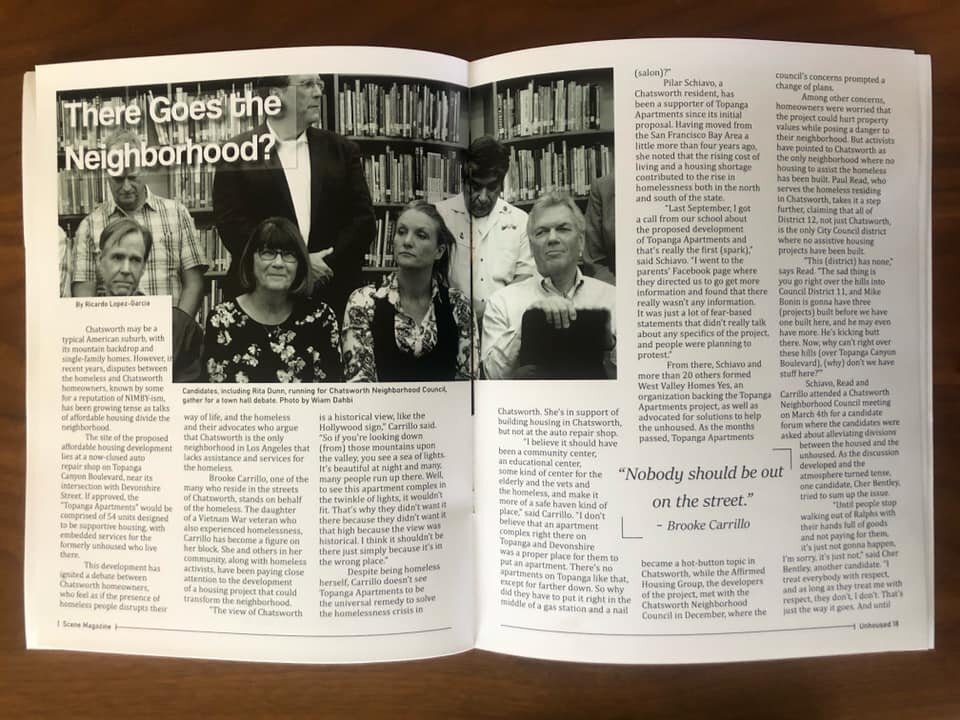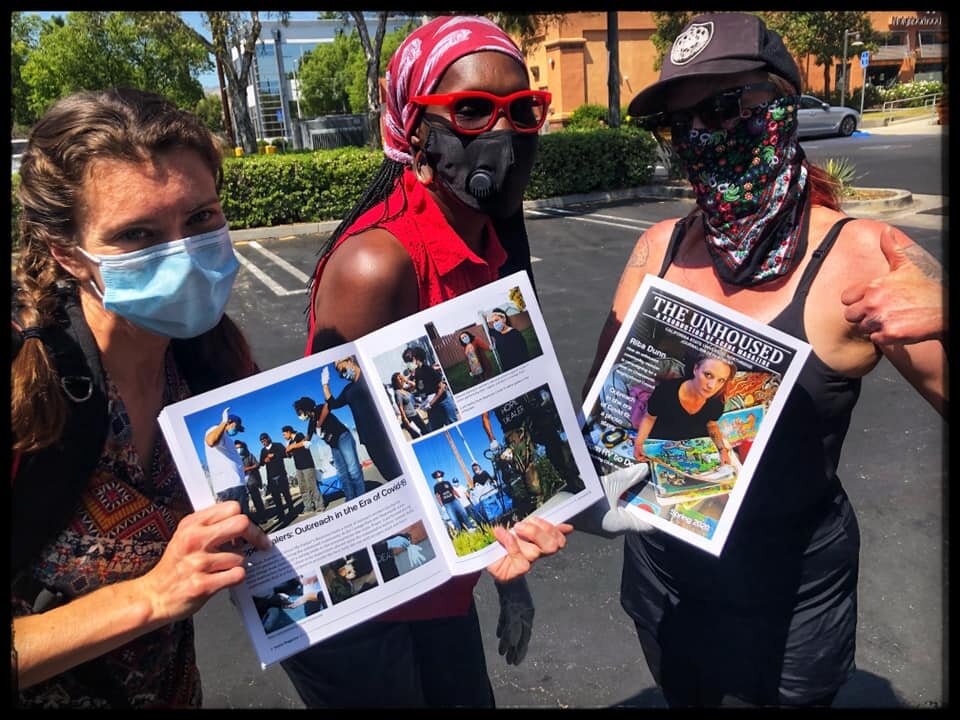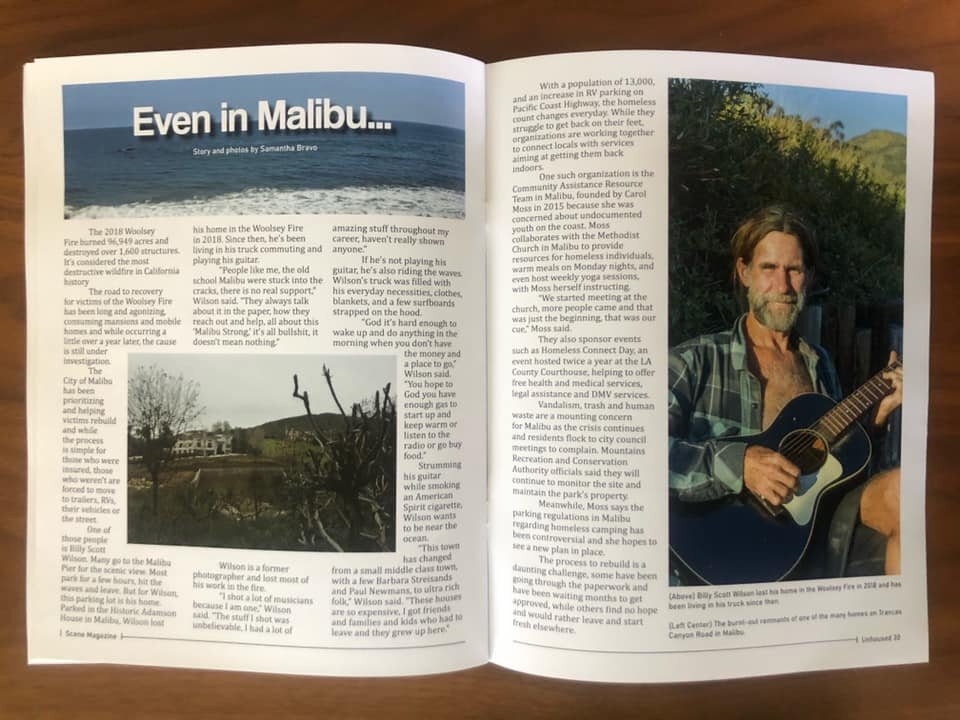Working through the Pandemic
How a dedicated group of journalism majors persevered, adjusted, and forged ahead with the difficult task of producing a magazine entirely devoted to issues related to homelessness…
“I had started designing an idea for the cover during the early days of February before this pandemic started. My goal was to get that out of the way first and then start designing the magazine page by page. Unfortunately, due to Covid-19 I lost my house because I couldn’t pay for its rent anymore and I had to also give up my car because it had to be fixed before I could legally drive it… I lost access to Adobe InDesign and I had to keep going back and forth between Goleta, where I currently reside, and Long Beach to get all my stuff to store it. I must say that I feel very proud being part of this historic edition and lucky to have a teacher with your endless passion for production and “getting things done.” I am graduating but I hope to see you again whenever I am at school or maybe for activism reasons.”
* Baraa Alkassir
I'm pleased to present our Spring 2020 edition of Scene Magazine, produced by students of the CSUN Journalism Department. Normally taught (though never by me before) as a class called “Magazine Production,” low enrollment resulted in the combining of that class with our Documentary Photojournalism class. This had the double-edged effect of making curriculum design more complicated, while at the same time opening up exciting new possibilities. The resulting issue (both online and in print) is completely dedicated to matters related to homelessness. This notion was inspired by a conversations I had late last year with Pastor Kathy Huck, founder of About My Father’s Business, a non-profit that does outreach to those living in the encampments which have sprung up across the western reaches of the San Fernando Valley, an area that once upon a timewas essentially untouched by homelessness. Things have changed dramatically in recent years, causing much chagrin among the property- and business owners in these traditionally residential, suburban, and even equestrian enclaves. Pastor Kathy made a compelling case that the Chatsworth area in particular has very little infrastructure, or the name-brand charities that have taken root in other council districts. In fact, it is an oft-cited truism that CD12 is the the one council district in Los Angeles that lacks even obligatory affordable housing. In this issue, our students skillfully and dutifully bring attention to the ongoing tension between the NIMBY and activist communities.
The difficulties in finding compromises that would allow for even the minimal
amount of affordable housing needed are explored in the excellent article,
“There Goes the Neighborhood?” by Ricardo Lopez-Garcia.
In what seems like a very different time and place now, work on this magazine project was jump-started by a panel convened on campus back on February 4th. Simply titled “Working On It,” we brought together an impressive group of activists and social service workers, which included Pastor Huck and several others who ended up being featured prominently in the magazine, such as producer of We The Unhoused Podcast, Theodore Henderson, and Brooke Carrillo and Rita Dunn, each of whom set an inspirational example and do not let their struggles with poverty and marginalization stop them from speaking out on behalf of their unhoused neighbors and allies. I can’t thank them, and everyone else who attended that memorable panel discussion, enough for lighting a fire under our students with straight talk, followed by open access to their lives and work. They allowed us to place most of our emphasis on those seeking solutions to the crisis, and one of the things I’m most proud of is the absence of the stereotypical pity-invoking imagery, sometimes justifiably referred to as “poverty porn,” in this magazine. Instead, we were proud to feature the work of groups such as Artists United to End Homelessness, and the photography of Lelund Nathaniel Hollins, whose “Fallen Legends” series began last year, while he was a member of our How We See It participatory photography workshop in North Hollywood.
“How should they have given a thought to anything like plague, which rules out any futures, cancels journeys, silences the exchange of views.”
* Albert Camus, The Plague
Halfway through the semester, the widespread disruption brought on by the COVID-19 outbreak forced the closure of our campus. It brought increased uncertainty to the lives of those experiencing homelessness, and upheaval to our students. Several of the students involved in this project were left scrambling to adjust to financial, housing, and health issues. A grad student who was working on a story about the many encampments which have appeared along the Metro lines in the Antelope Valley, had this effort and his entire master's degree thesis project derailed when he learned that both of his parents had tested positive back in New York. One of our photo editors was called back home to Canada, while others faced unemployment and other pressures. Further complicating things were the unexpected limitations in terms of access-- not only access to our unhoused friends in the encampments and elsewhere, but general access to offices, organizations, and so on. Because of this, a few other stories that were being worked on, such as the effects of homelessness on women, the difficulties in assisting youth coming out of foster care, obstacles faced by various non-profits trying to coordinate activities to connect people to services, and a story on a needle exchange program in Skid Row, were either scrapped, scaled down, or bundled into other stories. From mid-March until the end, our editorial meetings were conducted virtually, which made an already challenging task that much more so. Much credit has to be given to a core group of students who rose to the challenge and took on leadership roles, holding several sessions on Zoom even without my involvement. As the results show, they did a fantastic job in keeping our focus on a sensitive, solutions-based approach to a humanitarian crisis that will continue to affect a very vulnerable, marginalized segment of our community and the city-at-large, for some time to come.
David Blumenkrantz, May 2020
Brooke Carrillo, photographed by Sarah Shabbar, on location with a portable studio, assisted by Shae Hammond. Read, “Queen of the Encampment,” by Sloane Bozzi.
A rare on-campus meeting during the early weeks of the Covid-19 shutdown, with Prof. Blumenkrantz & photojournalist Shae Hammond
THE STRUGGLE CONTINUES This photograph, taken by Wiam Dahbi, shows Rita Dunn at a town hall meeting where she made it known she wished to be considered for a seat on the Chatsworth Neighborhood Council. The election, originally scheduled for March 21, 2020, was delayed when the Covid-19 pandemic disrupted life as we knew it. The week our magazine was released, Rita discovered that there had been an online meeting, which she did not know about or attend, during which the existing council determined that the selection would be pushed well into the future, March 2021. Rita is justified in feeling that this was done in an effort by the NIMBY representatives, (who basically make up the entire council), to avoid having a representative from the Unhoused community involved in their decision-making processes.

